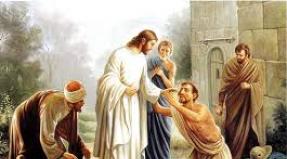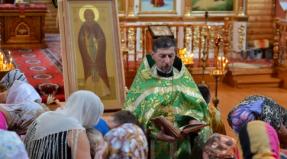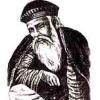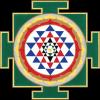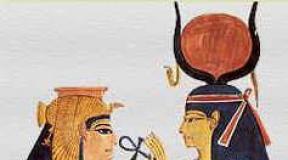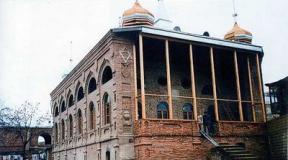The first ecumenical council of the Christian church. Ecumenical Councils
For many centuries, since the inception of the Christian faith, people have tried to accept the revelation of the Lord in all its purity, and false followers have distorted it with human speculation. For their exposure, discussion of canonical and dogmatic problems in the early christian church Ecumenical Councils were convened. They united adherents of the faith of Christ from all corners of the Greco-Roman Empire, pastors and teachers from barbarian countries. The period from the IV to the VIII centuries in church history is usually called the era of the strengthening of the true faith, the years of the Ecumenical Councils contributed to this in all their might.
Historical excursion
For Christians living today, the first Ecumenical Councils are very important, and their significance is revealed in a special way. All Orthodox and Catholics should know and understand what the early Christian church believed in, to which it was heading. In history you can see the lies of modern cults and sects, claiming to be similar to dogmatic doctrine.
From the very beginnings of the Christian Church, there has already been an unshakable and harmonious theology based on the basic doctrines of faith - in the form of dogmas about the divinity of Christ, the spirit. In addition, there were some rules of the internal church order, the time and order of the services. The first Ecumenical Councils were created specifically to preserve the dogmas of faith in their true form.
First holy meeting
The first Ecumenical Council was held in 325. Among those present at the holy meeting of the fathers, the most famous were Spyridon of Trimifuntsky, Archbishop Nicholas of Mirlikia, Bishop of Nisibia, Athanasius the Great and others.
At the council, the teaching of Arius, who rejected the divinity of Christ, was condemned and anathematized. The unchanging truth about the Person of the Son of God, his equality with the Father to God and the Divine essence itself were affirmed. Church historians note that at the council the definition of the very concept of faith was announced after lengthy trials and research, so that no opinions arose that would give rise to a split in the thoughts of Christians themselves. The Spirit of God brought the bishops to agreement. After the completion of the Council of Nicene, the heretic Arius suffered a difficult and unexpected death, but his false teaching is still alive among the sectarian preachers.
All the decrees that the Ecumenical Councils adopted were not invented by its participants, but were approved by the Church Fathers through the participation of the Holy Spirit and solely on the basis of Holy Scripture... In order for all believers to have access to the true teaching that Christianity carries, it was clearly and succinctly stated in the first seven terms of the Creed. This form is preserved to this day.

Second holy meeting
The second Ecumenical Council was held in 381 at Constantinople. The main reason was the development of the false teaching of the Bishop of Macedonia and his adherents, the Arian Dukhobors. Heretical statements ranked the son of God not as consubstantial God the father. The holy spirit was designated by heretics as the ministerial power of the Lord, like the angels.
At the second council, the true Christian doctrine was defended by Cyril of Jerusalem, Gregory of Nyssa, George the Theologian, consisting of 150 bishops present. The Holy Fathers approved the dogma of the consubstantiality and equality of God the Father, the Son and the Holy Spirit. In addition, the church elders approved the Nicene Creed, which to this day is a guide for the church.
Third holy meeting
The Third Ecumenical Council convened in Ephesus in 431, about two hundred bishops came to it. The Fathers decided to recognize the union of two natures in Christ: human and divine. It was decided to preach Christ as a perfect man and perfect God, and the Virgin Mary as the Mother of God.
Fourth Holy Meeting
The fourth Ecumenical Council, held in Chalcedon, was convened specifically to eliminate all the Monophysite controversies that began to spread around the church. A holy congregation of 650 bishops identified the only true teaching of the church and rejected all existing false teachings. The Fathers decreed that the Lord Christ is the true, unshakable God and true man. According to his deity, he is eternally reborn from his father, according to humanity, he was born from the Virgin Mary, in all likeness to man, except for sin. During the incarnation, the human and the divine were united in the body of Christ invariably, inseparably and inseparably.
It is worth noting that the heresy of the Monophysites brought a lot of evil to the church. False doctrine was not completely eradicated by conciliar condemnation, and disputes between the heretic followers of Eutychios and Nestorius developed for a long time. The main reason for the controversy was the writings of three followers of the church - Fyodor Mopsuyetsky, Iva of Edessa, Theodorite of Kirsky. The mentioned bishops were condemned by Emperor Justinian, but his decree was not recognized By the Universal Church... Therefore, a dispute arose about three chapters.

Fifth Holy Meeting
To resolve the controversial issue, the fifth council was held in Constantinople. The writings of the bishops were severely condemned. To highlight the true adherents of the faith, the concept of Orthodox Christians and the Catholic Church arose. The Fifth Council failed to produce the desired results. The Monophysites formed into societies that completely separated from the Catholic Church and continued to instill heresy, generate disputes within Christians.
Sixth Holy Meeting
The history of the Ecumenical Councils says that the struggle of orthodox Christians with heretics lasted for a long time. In Constantinople, the sixth council (Trulli) was convened, at which the truth was finally to be affirmed. At a meeting attended by 170 bishops, the teachings of the Monothelites and Monophysites were condemned and rejected. In Jesus Christ, two natures were recognized - divine and human, and, accordingly, two wills - divine and human. After this cathedral, Monothelianism fell, and for about fifty years the Christian church lived relatively quietly. New vague currents emerged later on the iconoclastic heresy.

Seventh Holy Meeting
The last 7th Ecumenical Council was held in Nicea in 787. It was attended by 367 bishops. The holy elders rejected and condemned the iconoclastic heresy and decreed that the icons should not be worshiped, which befits only God, but reverence and reverent worship. Those believers who worshiped icons as God himself were excommunicated. After the 7th Ecumenical Council was held, iconoclasm troubled the church for more than 25 years.
The Significance of Holy Meetings
The Seven Ecumenical Councils are of paramount importance in the development of the basic dogmas of the Christian doctrine, on which all modern faith is based.
- The first - affirmed the divinity of Christ, his equality with the Father to God.
- The second - condemned the heresy of Macedon, rejecting the divine essence of the Holy Spirit.
- The third - eliminated the heresy of Nestorius, who preached about the split in the faces of the God-man.
- The fourth dealt a final blow to the false teaching of Monophysitism.
- Fifth - he completed the defeat of heresy and confirmed the confession of two natures in Jesus - human and divine.
- The sixth - condemned the Monothelites and decided to confess two wills in Christ.
- Seventh - overthrew the iconoclastic heresy.
The years of the Ecumenical Councils made it possible to introduce certainty and completeness into the orthodox Christian teaching.

Eighth Ecumenical Council

Instead of a conclusion
Ecumenical Councils
Ecumenical Councils - meetings higher clergy and representatives of local Christian churches, where the foundations of the Christian doctrine were developed and approved, canonical liturgical rules were formed, various theological concepts were evaluated and heresies were condemned. The Church, as the Body of Christ, has a single conciliar consciousness, guided by the Holy Spirit, which receives its definite expression in the decisions of church councils. The convening of councils is an ancient practice for resolving church issues that have arisen (in Acts 15, 6 and 37 canon of St. App.). Due to the emergence of issues of general church significance, they began to convene Ecumenical Councils, by which a number of basic doctrinal truths were precisely formulated and approved, thus becoming part of the Holy Tradition. The status of a council is established by the Church on the basis of the nature of the decisions of the council and their conformity with the church experience, which is carried by the church people.
The Orthodox Church recognizes seven Councils as "Ecumenical":
- I Ecumenical Council - Nicene 325
- II Ecumenical Council - Constantinople 381
- III Ecumenical Council - Ephesus 431
- IV Ecumenical Council - Chalcedonian 451
- V Ecumenical Council - 2nd Constantinople 553
- VI Ecumenical Council - Constantinople 3rd (680-) BC
- VII Ecumenical Council - Nicene 2nd. 787 BC
FIRST UNIVERSAL COUNCIL
SIXTH UNIVERSAL COUNCIL
The Sixth Ecumenical Council was convened in 680, in Constantinople, under Emperor Constantine Pogonatus, and consisted of 170 bishops. The council was convened against the false teaching of the heretics - the Monothelites, who, although they recognized in Jesus Christ two natures, the Divine and the human, but one Divine will. After the 5th Ecumenical Council, the disturbances produced by the Monothelites continued and threatened the Greek Empire with great danger. Emperor Heraclius, desiring reconciliation, decided to persuade the Orthodox to concession to the Monothelites and by the power of his power ordered to recognize in Jesus Christ one will with two natures. Sophronius of Jerusalem and the Constantinople monk Maxim the Confessor were the defenders and exponents of the true teaching of the Church. The Sixth Ecumenical Council condemned and rejected the heresy of the Monothelites, and determined to recognize in Jesus Christ two natures - the Divine and the human, - and according to these two natures - two wills, but in such a way that the human will in Christ is not contrary, but submissive to His Divine will.
Eleven years later, the Council reopened meetings in the royal chambers, called Trulli, to resolve issues primarily related to ecclesiastical deanery. In this respect, he seemed to supplement the Fifth and Sixth Ecumenical Councils, and therefore is called the Fifth-Sixth. The Council approved the rules by which the Church should be governed, namely: the 85 rules of the Holy Apostles, the rules of the 6 Ecumenical and 7 local Councils, and the rules of the 13 Church Fathers. These rules were subsequently supplemented by the rules of the Seventh Ecumenical Council and two more Local Councils, and made up the so-called "Nomokanon", and in Russian "The Helm Book", which is the basis church government Orthodox Church.
At this Council, some innovations of the Roman Church were condemned that did not agree with the spirit of the decrees of the Ecumenical Church, namely: the compulsion to celibacy of priests and deacons, strict fasting on the Saturdays of Great Lent, and the image of Christ in the form of a lamb (lamb).
SEVENTH Ecumenical Council
The Seventh Ecumenical Council was convened in 787, in the city of Nicaea, under Empress Irina (widow of Emperor Leo Khazar), and consisted of 367 fathers. The council was convened against the iconoclastic heresy that arose 60 years before the council, under the Greek emperor Leo the Isaurian, who, wishing to convert Mohammedans to Christianity, considered it necessary to destroy the veneration of icons. This heresy continued under his son Constantine Copronymus and grandson Lev Khazar. The Council condemned and rejected the iconoclastic heresy and determined - to supply and lay in St. temples, together with the image of the Honest and Life-giving Cross of the Lord, and holy icons, to honor and worship them, raising the mind and heart to the Lord God, the Mother of God and the Saints depicted on them.
After the 7th Ecumenical Council, the persecution of holy icons was again erected by the subsequent three emperors (Leo the Armenian, Mikhail Balba and Theophilus) and for about 25 years more worried the Church. Veneration of St. icons was finally restored and approved at the Local Council of Constantinople in 842, under the Empress Theodore. At this Council, in gratitude to the Lord God, who granted the Church victory over the iconoclasts and all heretics, the feast of the Triumph of Orthodoxy was established, which is supposed to be celebrated on the first Sunday of Great Lent and which is celebrated up to this day in the entire Ecumenical Orthodox Church.
A number of councils were convened as Ecumenical Councils, but for some reason were not recognized by the Orthodox Church as Ecumenical. Most often this was due to the fact that the Pope refused to sign their decisions. Nevertheless, these councils enjoy the highest authority in the Orthodox Church and some Orthodox theologians believe that they should be included in the Ecumenical Councils.
- Fifth-sixth Cathedral (Trull)
- IV Cathedral of Constantinople -880
- V Cathedral of Constantinople - years.
Trull Cathedral
Trull Cathedral was created by Emperor Justinian II in 691 in Constantinople. The Fifth and Sixth Ecumenical Councils did not endure any definitions, focusing on the dogmatic needs of the Church and the fight against heresies. Meanwhile, in the Church, the decline of discipline and piety intensified. The new Council was conceived as an addition to the previous Councils, designed to unify and complement church norms. The Council was assembled in the same hall as the VI Ecumenical Council, presenting with clarity, as it were, its continuation, and with the same ecumenical meaning. For its meetings, the same room was set aside with vaults, the so-called "trullami", and the whole cathedral was officially named Trullski in the documents. And the task of filling it with the canons of two ecumenical councils - V and VI - is indicated by an addition to its name: "The Fifth-Sixth - πενθεκτη" (Quinsextus).
As a result of the activities of the Trull Council, 102 canonical rules were adopted there (some of these canons repeat the rules of previous Ecumenical Councils). They formed the basis for the development of Orthodox canon law.
The Orthodox Church united the Council of Trull with the VI Ecumenical Council, considering it as a continuation of the VI Council. Therefore, the 102 canons of the Council of Trul is sometimes called the Rules of the VI Ecumenical Council. The Roman Catholic Church, recognizing the Sixth Council as Ecumenical, did not recognize the resolutions of the Trull Council, and, of necessity, considers it as a separate council.
The 102 canons of the Trull Cathedral openly paint a broad picture of ecclesiastical and moral disorder and strive to eliminate all of them, reminding by this the tasks of our Russian councils: Vladimir Cathedral in 1274 and Moscow Cathedral in 1551.
Canons of Trull Cathedral and the Roman Church
Many of the canons were polemically directed against the Roman Church, or, in general, were alien to her. For example, Canon 2 affirms the authority of 85 rules of the Apostolic and other Eastern Councils, which the Roman Church did not consider to be obligatory for itself. The Romans used a collection of 50 apostolic rules of Dionysius the Small, but they were not considered mandatory. Canon 36 renewed the famous 28th Canon of the Council of Chalcedon, which was not accepted by Rome. Canon 13 went against the celibacy of the clergy. Canon 55 went against the Roman fast on Saturday. And other canons: the 16th about seven deacons, the 52nd about the Liturgy of the Presanctified, the 57th about giving milk and honey in the mouth of the newly baptized - all this was against the customs of the Roman Church, sometimes so openly called.
The papal representatives in Constantinople signed the acts of the Council of Trull. But when these acts were sent to Pope Sergius for signature in Rome, he flatly refused to write them, calling them delusions. Subsequently, before the division of the churches, Constantinople made repeated attempts to persuade Rome to accept the acts of the Council of Trull (from an attempt to forcefully bring the Pope from Rome to Constantinople to "resolve" this issue, to persuasion to revise the 102 rules, correct, reject what the Pope found necessary, and accept the rest), which gave variable results, but in the end the Roman Church did not recognize the Council of Trull.
Rogue cathedrals
Rogue cathedrals are called church cathedrals, which the Church rejected as heretical, often such councils were held under external pressure or with violations of procedure. Below are the robber councils that were organized as ecumenical:
- Ephesus "robber" cathedral of 449
- Iconoclastic cathedral
- Constantinople robber cathedral 869-870
- Florentine Cathedral 1431-1445 - Revered by Catholics as Ecumenical.
Ecumenical Councils (in Greek: synod oikomenikoy) - Councils, compiled with the assistance of the secular (imperial) government, from representatives of the entire Christian Church, convened from various parts of the Greco-Roman Empire and the so-called barbarian countries, to establish mandatory rules regarding the dogmas of faith and various manifestations of church life and activities. The emperor usually convened a council, determined the place of its meetings, assigned a certain amount for the convocation and activity of the council, exercised the right of honorary presidency over it and signed the acts of the council's act and (in fact) sometimes influenced its decisions, although in principle he had no right of judgment in matters of faith. Bishops were full members of the council, as representatives of various local churches... The dogmatic definitions, rules or canons and judicial decisions of the council were approved by the signature of all its members; the consolidation of the conciliar act by the emperor gave him the binding force of church law, the violation of which was punishable by secular criminal laws.
True Ecumenical Councils are recognized only those of them, the decrees of which were recognized as binding in the entire Christian Church, both Eastern (Orthodox) and Roman (Catholic). There are seven such cathedrals.
The era of the Ecumenical Councils
1st Ecumenical Council (Nicene 1) met under the emperor Constantine the Great in 325, in Nicea (in Bithynia), in connection with the teaching of the Alexandrian presbyter Arius that the Son of God is the creation of God the Father and therefore is not consubstantial with the Father ( arian heresy Having condemned Arius, the council compiled a symbol of true teaching and approved the "consubstantial" (ohm aboutusiya)Son with Father. Of the many lists of the rules of this council, only 20 are considered authentic. The council consisted of 318 bishops, many elders and deacons, of which one, the famous Afanasy, led the debate. Presiding at the council, according to some scholars, was Hosea of \u200b\u200bKordubsky, according to others - Eustathius of Antioch.
First Ecumenical Council. Artist V.I.Surikov. Cathedral of Christ the Savior in Moscow
2nd Ecumenical Council - Constantinople, met in 381, under the emperor Theodosius I, against the semi-Arian and Constantinople bishop of Macedon. The first recognized the Son of God as not consubstantial, only "likewise" (ohm andusios)Father, and the latter proclaimed the inequality of the third member of the Trinity, the Holy Spirit, declaring him only the first creation and instrument of the Son. In addition, the council considered and condemned the teaching of the Anomeans - the followers of Aetius and Eunomius, who taught that the Son was not at all like the Father ( anomoyos), but consists of a different entity (eterousios),as well as the teachings of the followers of Photin, who renewed Sabellianism and Apollinarius (Laodicea), who argued that the flesh of Christ, brought from heaven from the bosom of the Father, did not have a rational soul, since it was replaced by the Deity of the Word.
At this council, which published that Symbol of faith, which is now adopted in the Orthodox Church, and 7 Rules (the account of the latter is not the same: they are counted from 3 to 11), there were 150 bishops of one eastern church (it is believed that Western bishops were not invited). It was chaired by three successively: Meletius of Antioch, Gregory the Theologian and Nectarios of Constantinople.

Second Ecumenical Council. Artist V.I.Surikov
3rd Ecumenical Council , Ephesus, met in 431, under the emperor Theodosius II, against the archbishop of Constantinople Nestorius, who taught that the incarnation of the Son of God was His simple dwelling in the man-Christ, and not the union of the Divine and humanity in one person, why, according to the teachings of Nestorius ( nestorianism), and the Theotokos should be called "Theotokos" or even "Theotokos". This council was attended by 200 bishops and 3 legates of Pope Celestine; the latter arrived after the condemnation of Nestorius and only signed the conciliar definitions, while the voice of the pope during the sessions of the council had the presiding over him Cyril of Alexandria. The council adopted 12 anathemas (curses) of Cyril of Alexandria, against the teachings of Nestorius, and 6 rules were included in his district epistle, to which two more decrees were added on the affairs of the presbyter Charisia and the bishop Regina.

Third Ecumenical Council. Artist V.I.Surikov
4th Ecumenical Council , Chalcedonian, gathered in 451, under the emperor Marcian, against Archimandrite Eutychios and his defender Dioscorus, Archbishop of Alexandria, who, in contrast to Nestorius, taught that in Jesus Christ human nature was completely absorbed by the divine, as a result of which it lost everything inherent in human nature, except only visible image, so that after the union in Jesus Christ, only one divine nature remained, which in a visible human image lived on earth, suffered, died and rose again. Thus, according to this teaching, the body of Christ was not consubstantial to ours and had only one nature - divine, and not two inseparably and unmergedly united - divine and human. From the Greek words "one nature" the heresy of Eutychios and Dioscorus received the name monophysitism... The council was attended by 630 bishops and, among them, three legates of Pope Leo the Great. The Council condemned the previous Council of Ephesus 449 (known under the name of "robber" for its violent actions against the Orthodox) and especially Dioscorus of Alexandria, who presided over it. At the council, a definition of true doctrine was drawn up (printed in the "book of rules" under the name of the dogma of the 4th Ecumenical Council) and 27 rules (rule 28 was drawn up at a special meeting, and the 29th and 30th rules are only extracts from IV act).
5th Ecumenical Council (Constantinople 2nd), met in 553, under Emperor Justinian I, to resolve the dispute about the orthodoxy of the bishops Theodore of Mopsuest, Theodoret of Cyrus and Willow of Edessa, who, 120 years earlier, in their writings turned out to be partly supporters of Nestorius (such recognized by the scriptures: Theodore - all the writings, Theodoret - criticism of anathematisms adopted by the 3rd Ecumenical Council, and Iva - a letter to Mara, or Marina, Bishop of Ardashir in Persia). This council, which consisted of 165 bishops (Pope Vigilius II, who was at that time in Constantinople, did not go to the council, although he was invited, in view of the fact that he sympathized with the views of those against whom the council was going; despite this, however, he , as well as Pope Pelagius, recognized this council, and only after them, and until the end of the 6th century, the Western Church did not recognize it, and the Spanish councils, even in the 7th century, do not mention it; but in the end it was recognized in West). The Council did not issue rules, but was engaged in considering and settling the dispute "On Three Chapters" - this was the name of the dispute caused by the decree of the emperor in 544, in which, in three chapters, the teachings of the three above-mentioned bishops were considered and condemned.
6th Ecumenical Council (Constantinople 3rd), met in 680 under the emperor Constantine Pogonat, against heretics- monothelites, who, although they recognized two natures in Jesus Christ (like the Orthodox), but at the same time, together with the Monophysites, admitted only one will, conditioned by the unity of personal self-consciousness in Christ. This council was attended by 170 bishops and legates of Pope Agathon. Having drawn up a definition of the true doctrine, the council condemned many Eastern patriarchs and Pope Honorius for adherence to the Monothelite doctrine (the latter's representative at the council was Macarius of Aptioch), although the latter, as well as some of the Monothelite patriarchs, died 40 years before the council. The condemnation of Honorius was recognized by Pope Leo II (Agathon had already died at this time). This council also did not issue rules.
Fifth-sixth Cathedral... Since neither the 5th nor the 6th Ecumenical Councils issued rules, then, as if in addition to their activities, in 692, under Emperor Justinian II, a council was convened in Constantinople, which received the name of the Fifth-sixth or at the place of meetings in the hall with round vaults (Trullon) Trullsky. The council was attended by 227 bishops and a delegate from the Roman church - Bishop Basil from the island of Crete. This council, which did not compose a single dogmatic definition, but issued 102 canons, is very important, since for the first time on behalf of the entire church, a revision of all canon law in force at that time was made. So it rejected the apostolic decrees, approved the composition of the canonical rules collected in collections by the works of private individuals, corrected and supplemented the previous rules and, finally, published rules condemning the practice of the Roman and Armenian churches. The Council forbade "to forge, or reject, or accept other rules, except for the proper ones, with false inscriptions drawn up by some people who dared to trade in the truth."
7th Ecumenical Council (Nicene II) was convened in 787 under the Empress Irene, against heretics iconoclasts , who taught that icons are offensive to Christianity attempts to portray the inconceivable and that their veneration should lead to heresies and idolatry. In addition to the dogmatic definition, the council drew up 22 more rules. In Gaul, the 7th Ecumenical Council was not immediately recognized.
The dogmatic definitions of all seven Ecumenical Councils were recognized and accepted by the Roman Church. In relation to the canons of these councils, the Roman church adhered to the view expressed by Pope John VIII and expressed by the librarian Anastassy in the preface to the translation of the acts of the 7th Ecumenical Council: it accepted all the council rules, with the exception of those that contradicted papal decrees and “good Roman customs. ". But in addition to 7 councils recognized by the Orthodox, the Roman (Catholic) Church has its own councils, which it recognizes as ecumenical. These are: Constantinople 869, anathematized patriarch Photius and who declared the Pope an "instrument of the Holy Spirit" and outside the jurisdiction of the Ecumenical Councils; Lateran 1st (1123), on church investiture, church discipline and the liberation of the Holy Land from the infidels (see Crusades); Lateran 2nd (1139), against doctrine Arnold Breshansky abuse of spiritual power; Lateran 3rd (1179), against Waldensians; Lateran 4th (1215), against the Albigensians; Lyons 1st (1245), against the emperor Frederick II and the appointment of a crusade; Lyons 2nd (1274), on the question of the unification of the Catholic and Orthodox Churches ( union) proposed by the Byzantine emperor Michael Palaeologus; at this council, it was added to the Symbol of Faith in accordance with the Catholic teaching: “The Holy Spirit proceeds also from the son”; Vienna (1311), against the Templars, Beguards, Beguins, lollards, Waldensians, Albigensians; Pisa (1404); Constance (1414 - 18), where Jan Hus was convicted; Basel (1431), on the limitation of papal autocracy in church affairs; Ferraro-Florentina (1439), where a new union of Orthodoxy and Catholicism took place; Trent (1545), against the Reformation and the Vatican (1869 - 70), which established the dogma of papal infallibility.
7.6. The era of the Ecumenical Councils
The centuries from IV to VIII in the history of the Church are usually called the era of ecumenical councils. Ecumenical councils have become a unique form of organization of the internal life of the Church. Their origins go back to the so-called. The Apostolic Council, held in Jerusalem in 49 AD. e. The pinnacle of the Ecumenical Councils was the IV Ecumenical Council in Chalcedon (451) and the dogma of the God-manhood of Christ proclaimed by it. Christological searches and definitions not only in church, but also in political processes, in one way or another, are associated with Chalcedon. The entire depth of this epoch is revealed in the questioning about the meaning of God-manhood of Jesus Christ as a question about the nature of man and his purpose.
The first councils of the Church were not organized by anyone. Neither the authority of Holy Scripture, nor the church authorities have ever established the regulation of their conduct and have not given procedural directives. The conciliar principle is inherent in the very “nature” of Christianity: it manifests itself in early Christian communities, in Eucharistic unity, in the election of bishops. The activity of the council, as an exponent of church consciousness, requires spiritual and theological readiness and presupposes “the risk of faith,” since it is aimed both at the formulation of the principle and at the struggle against heresy.
In the beginning. IV century. The church faced the Arian heresy. According to O. Clement's definition, “... heresy is not just an episode in the history of culture that has long lost its relevance for us. Heresy is an expression of the constant temptation of the human mind, which wants to explain the mystery and ultimately shine it to nothing ”*. 6.
Arius, an Alexandrian priest, began to teach that Christ was created by God, therefore, different from the Father and not like him. God remains closed in his transcendence. This concept of God was inherited from Greek philosophy. The radical difference between the nature of God and the nature of Christ greatly simplified Christianity, but did not reveal the biblical antinomy about one God, about the unity and difference of the Son with the Father. According to Arius, Jesus was the pinnacle of creation, he was chosen by God by virtue of his merits as a morally perfect being. If this postulate is accepted, then both the mystery of the Trinity and the mystery of God-manhood will be impossible. Humanity, not deified in Christ, cannot claim a real union with God, only moral communication is possible between them, the example of which is Jesus. This rationalization of Christianity, based on abstract constructions, on the one hand, forced the Church, and on the other hand, gave her the opportunity to express her faith in concrete words and concepts. So was convened the first Ecumenical Council at Nicaea (325).
The Council of Nicea uncompromisingly condemned Arianism, affirming the dogma of the incarnation of the consubstantial Son. This expression of "consubstantiality" is an incomparable contribution of the council, since it establishes a fundamental relationship between God and creation, God and man. The Nicene definition sparked fierce controversy that lasted more than half a century. Many remained Arians or semi-Arians. As for the emperors, they, for the most part, supported Arianism: a transcendent and authoritarian God seemed to them a more reliable guarantor of power than a loving and suffering God.
A tremendous work on theological and spiritual deepening and complementing the Nicene symbol was done by Athanasius, a man of iron will and energy, who, despite exile, persecution and arrest, managed to withstand the “Arian turmoil”. After him, Trinitarian dogma was developed by the Cappadocians. On the second Ecumenical Council , held in Constantinople in 381, the Nicene Symbol was supplemented by a member that affirmed the Deity of the Spirit coming from God the Father.
Thus, the first theological theme of the Holy Trinity was inextricably linked with Christological definitions. The recognition of Christ as God or man depended on the understanding of the Incarnation. The question inevitably arose: does Christ unite God and man, or is there an ontological abyss between them? The acceptance of the Nicene "consubstantiality" was a clear answer: Christ is God, his incarnation was the manifestation of the Father and the Spirit in him. However, religious thought does not stop there: if in Christ God is united with man, then how is such a union possible and what role is assigned to man? It is important to understand that the search for answers to these questions was not a search for abstract formulas and was not a reason for speculative discussions. These were reflections on human freedom, his personal effort, his place and role in being. Hence the activity, and sometimes even the passion with which the discussion took place and the dogmas were created.
The Antioch School played an important role here. In the person of Theodore of Mopsuet and, especially, his disciple Nestorius, the Antiochians' striving for the "humanity of Christ" was manifested. Nestorius tried to rationalize Christianity. He rejected the recognition of the Virgin Mary as the Mother of God. Bishop Cyril of Alexandria spoke out against Nestorius. A representative of Alexandrian theology, he inherited the tradition that came from Irenaeus and Athanasius, in which the church experience of salvation by Christ is recognized as the criterion of theology. He saw the denial of this fact of salvation and communion with God in Nestorianism. To resolve this dispute, a third ecumenical council at Ephesus (431). It must be said that the atmosphere in which the cathedrals gathered and took place was not always calm. Often (as in the case of the third council), it was an atmosphere of mutual resentment, suspicion and misunderstanding due to differences in the shades of thought and the use of words. The adoption of a single dogma was preceded by a path of slow harmonization of words and traditions. The condemnation of Nestorius found support not only among church hierarchs, but also among the church people of Ephesus, Alexandria and Constantinople. The victory of Orthodoxy was expressed in the formulas of the council: Christ is the perfect God and the perfect man, in him two natures are united, the Holy Virgin is the Mother of God.
The controversy subsided, however, as for the mass of Christians, they perceived the deity of Christ much more strongly than his humanity, the difference in nature in Christ was perceived as a rejection of Christianity. This was accompanied by statements about the sinfulness of human nature, where any comparison of Christ with people was considered impious.
This led to the emergence of one of the most significant heresies of Monophysitism. Monophysitism asserted one nature in Christ, it is true, a composite one - divine-human, but with a clear predominance of the divine, the dissolution of the human in the divine. Monophysitism arose in Constantinople, from where it was widely declared by Archimandrite Eutykhios. The first Monophysite intuition was the glorification of the transformation that took place in Christ. But this only makes sense eschatological and requires an ascetic, ethical and historical realization in a person's own freedom, which Monophysitism denies him. In extreme Monophysite circles, formulations appeared regarding the dissolution of human nature into the divine. Thus, emanation replaces creation, and the salvation of the world turns into its dissolution in deity. If Christianity became Monophysite, it would be difficult to assert the human dimension of history, the creative freedom of man, his divine-human task.
Chalcedonian Cathedral (451) occupies a special place in church history. The formula of the Chalcedonian dogma affirms the two natures of Christ in the union "unmixed, unchanging, inseparable, inseparable." This negative definition has a deep religious meaning: it expresses the very essence of Christianity. God unites with man, but man in this unity is not diminished, he is given a new dimension - the divine-human.
The Chalcedonian "Oros" begins a new, Byzantine chapter in the history of Orthodoxy. The Antioch see was debunked by Nestorianism, Alexandria was significantly weakened after Chalcedon, the canons of which, both theological and legal, contributed to the assertion of the primacy of Constantinople, although the prerequisites for this were formed much earlier. However, the decisions of the Council of Chalcedon were perceived with difficulty by many: entire provinces in Egypt. Syria. Asia Minor remained adherents of Monophysitism. finding support both in monasticism and in the episcopate. The emperors of Constantinople pursued a policy of compromise and sometimes open support for the Monophysites, which caused serious disagreements with Rome. In an attempt to preserve the Monophysite East, the Church was losing the Orthodox West.
In 533, Justinian called fifth ecumenical council in Constantinople. This council condemned the teachings of Origen and his student Evagrius and some writings by the extreme representatives of the Antiochian school. A list of the "chosen Fathers" - the indisputable authorities of Orthodox Tradition - was compiled and the Chalcedonian dogma was confirmed.
As we can see, neither Antioch nor Alexandria was able to give a complete presentation of the doctrine. The formula of Chalcedon became the necessary synthesis that Christendom needed. However, it still had to be revealed in the necessary terms, it had to be affirmed in the church consciousness in new meanings, and the entire terminology had to be rebuilt. This required the fifth and sixth Ecumenical Councils.
Despite the dogmatic definitions of the fourth and fifth ecumenical councils, there was no reconciliation with the Monophysites. In the mainstream of Monophysitism, Monothelism arises - the doctrine of the one will of Christ, the divine, which absorbed his human will. It has been argued that God is the source of all of Christ's human actions. Monifelitism curtailed the fullness of Christ's humanity and deprived him of his human will. And again, the Church is agitated by disputes and disagreements: the Patriarchs of Constantinople accept Monothelism, which causes a storm of protests in the West. The Monk Maximus the Confessor, a man of tragic fate, spoke out in defense of Orthodoxy: after repeated exile, torture and mutilation, he dies without accepting the Monothelite formula. A little earlier, a similar fate befell Pope Martin, who assembled a council of 150 bishops, who condemned Monothelism. The emperors supported heresy. However, the Church still needed a final solution to the issue. For this, the sixth Ecumenical Council gathered in Constantinople (680 - 681). Monothelism was rejected, and the Chalcedonian definition was supplemented by the dogma of the two wills of Christ. The further deepening of the Chalcedonian "Oros" laid the foundation for Christian anthropology: the assertion of the whole person and his absolute value was the result of Christological disputes.
Fifth Trull Cathedral (691) was convened to supplement the fifth and sixth councils with his canonical decrees. Its definitions are of an ecclesiastical legal nature and relate to ritual and cult practice and the regulation of monastic life.
A new stage in the life of the Church is marked by a new troubled iconoclasm. The original essence of the icons was not in the depiction of saints or the events of the Gospel history, but in the expression of certain thoughts about Christ. The icon is associated with the disclosure in the church consciousness of the meaning of the incarnation of God. Icon-making was supposed to provide access to the spiritual world, to a new reality, to stir up the depths of memory. Later, already in the twentieth century, the philosopher Pavel Florensky wrote about the “reminiscent meaning of icons”, the ontological characteristic of which is “to be what they symbolize” *. 7
Icon veneration, established in the 7th century. sometimes it took on forms approaching idolatry. As a reaction to this, an iconoclastic movement arose. Some emperors supported iconoclasts, historians see this as an attempt to find a compromise with Islam, where, as you know, images of living beings are prohibited. Monasticism came out to defend the icons, taking upon itself the brunt of the persecution. After the change of power in 787, Nicaea gathered seventh Ecumenical Council , which proclaimed the dogma of veneration of icons. This dogma was prepared by Orthodox theological thought and, above all, by the work of John Damascene. He derives the protection of icons directly from the Incarnation and God-manhood of Christ. His famous dictum: “I do not respect matter, but the Creator of matter, who became matter for me” - formed the basis of the Christological definition of the icon and the veneration of icons. This victory is still celebrated on the first Sunday of Great Lent as "the triumph of Orthodoxy."
The dogma of veneration of icons completes the dogmatic dialectics of the era of the Ecumenical Councils, focused on two main themes of divine revelation: on the doctrine of the Trinity and on the doctrine of God-manhood. In this respect, the doctrinal definitions of the Ecumenical Councils constitute the invariable foundation of Orthodoxy.
Ecumenical Councils are called Councils convened on behalf of the entire Church to resolve questions about the truths of doctrine and recognized by the whole Church as the sources of Her dogmatic Tradition and canon law. There were seven such Councils:
The I-th Ecumenical (I Nicene) Council (325) was convened by St. imp. Constantine the Great to condemn the heresy of the Alexandrian presbyter Arius, who taught that the Son of God is only the highest creation of the Father and is called the Son not in essence, but by adoption. 318 bishops of the Council condemned this teaching as heresy and affirmed the truth about the consubstantiation of the Son with the Father and His eternal birth. They also compiled the first seven members of the Creed and recorded the advantages of the bishops of the four largest metropolises: Roman, Alexandria, Antioch and Jerusalem (6th and 7th canons).
The II Ecumenical (I Constantropoli) Council (381) completed the formation of the Trinitarian dogma. It was called by St. imp. Theodosius the Great for the final condemnation of various followers of Arius, including the Macedonian Dukhobors, who rejected the Deity of the Holy Spirit, considering Him to be the creation of the Son. 150 Eastern bishops confirmed the truth about the consubstantiality of the Holy Spirit "from the Father proceeding" with the Father and the Son, made up the other five members of the Creed and recorded the superiority of the Constantinople bishop as the second most honorable after the Roman one - "because this city is the second Rome" (3- th canon).
The III Ecumenical (I Ephesus) Council (431) opened the era of Christological disputes (about the Face of Jesus Christ). It was convened to condemn the heresy of the Constantinople Bishop Nestorius, who taught that Blessed virgin Mary gave birth to a simple man Christ, with whom God subsequently united morally and gracefully dwelt in Him, as in a temple. Thus, the divine and human natures in Christ remained separate. The 200 bishops of the Council confirmed the truth that both natures in Christ are united into one God-human Person (Hypostasis).
The IV Ecumenical (Chalcedonian) Council (451) was convened to condemn the heresy of Archimandrite Eutychios of Constantinople, who, denying Nestorianism, went to the opposite extreme and began to teach about the complete fusion of the Divine and human nature in Christ. At the same time, the Deity inevitably absorbed humanity (the so-called Monophysitism), 630 bishops of the Council approved the antinomical truth that the two natures in Christ are united "unmixed and unchanging" (against Eutychius), "inseparable and inseparable" (against Nestorius). The canons of the Council finally fixed the so-called. "Pentarchy" - the ratio of the five patriarchies.
The V-th Ecumenical (II Constantinople) Council (553) was convened by St. Emperor Justinian I to pacify the Monophysite turmoil that arose after the Council of Chalcedon. The Monophysites accused the adherents of the Council of Chalcedon of hidden Nestorianism and, in support of this, referred to three Syrian bishops (Theodore of Mopsuet, Theodoret of Cyrus and Iva of Edessa), in whose writings Nestorian opinions were indeed expressed. In order to facilitate the accession of the Monophysites to Orthodoxy, the Council condemned the errors of the three teachers ("three chapters"), as well as the errors of Origen.
The VI Ecumenical (III Constantinople) Council (680-681; 692) was convened to condemn the heresy of the Monothelites, who, although they recognized two natures in Jesus Christ, united them by one Divine will. The Council of 170 bishops confirmed the truth that Jesus Christ, as the true God and the true Man, has two wills, but his human will is not opposed, but is submissive to the Divine. Thus, the disclosure of the Christological dogma was completed.
A direct continuation of this Council was the so-called. Trull Council, convened 11 years later in the Trull Chambers of the royal palace to approve the existing canonical code. He is also called the "Fifth-Sixth", meaning that he fulfilled in the canonical respect the acts of the 5th and 6th Ecumenical Councils.
The 7th Ecumenical (II Nicene) Council (787) was convened by Empress Irene to condemn the so-called. iconoclastic heresy - the last imperial heresy, which rejected icon veneration as idolatry. The cathedral revealed the dogmatic essence of the icon and approved the obligatory veneration of icons.
Note. The Ecumenical Orthodox Church stopped at seven Ecumenical Councils and confesses Itself as the Church of seven Ecumenical Councils. T.N. The Ancient Orthodox (or Eastern Orthodox) Churches settled on the first three Ecumenical Councils, not accepting the 4th, Chalcedonian (so-called non-Chalcedonian) Councils. The Western Roman Catholic Church continues its dogmatic development and already has 21 Councils (moreover, the last 14 Councils are also called Ecumenical). Protestant denominations do not recognize Ecumenical Councils at all.
The division into "East" and "West" is rather arbitrary. It is nevertheless convenient for showing a schematic history of Christianity. On the right side of the diagram
Eastern Christianity, i.e. predominantly Orthodoxy. On the left side
Western Christianity, i.e. Roman Catholicism and Protestant Confessions.
